Montage Theories of Soviet Cinema
advertisement
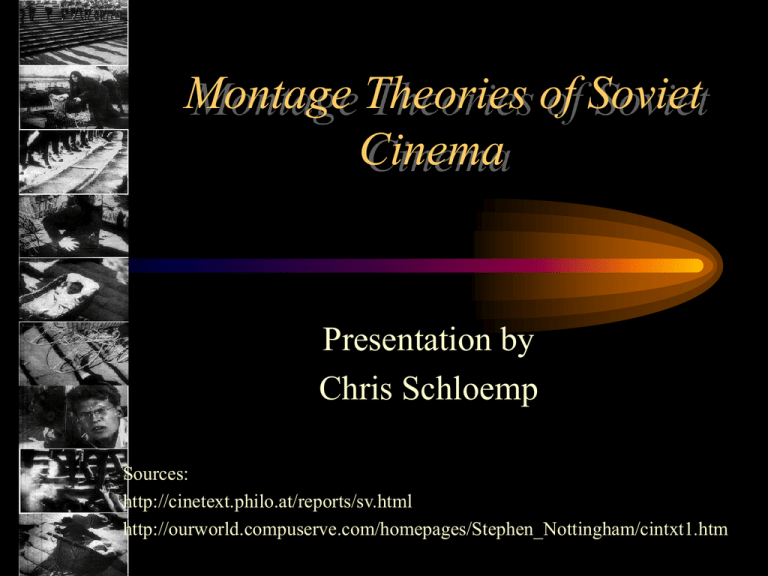
Montage Theories of Soviet Cinema Presentation by Chris Schloemp Sources: http://cinetext.philo.at/reports/sv.html http://ourworld.compuserve.com/homepages/Stephen_Nottingham/cintxt1.htm Soviet Cinema in the 1920s • Vibrant film culture in the period following the Russian Revolution • Influential developments in film theory • Several films stand as landmarks in the history of world cinema Development of Formalism • Dominant film theory of the silent era • Applied to a range of arts, including literature and painting • Holds that a work’s meaning exists primarily in its form or language, rather than its content or subject The Pioneer: Lev Kuleshov • Re-edited existing film stock to develop ideas of film grammar • Formed workshops in 1920 at the State Film School • Central belief: the viewer’s response in cinema depends less on the individual shot and more on the editing or montage The Kuleshov Effect • Famous experiment with shot juxtapositions • First shot: c/u of actor with neutral expression, then joined this shot to: – c/u of a bowl of soup – c/u of a coffin with a corpse – c/u of a little girl playing • Test audiences praised the actor’s versatility in showing hunger, sorrow, and pride, even though the shot of the actor remained the same each time Dziga Vertov • Enthusiastic about film’s potential as educational and propagandistic tool • Since Russian society was composed of illiterate workers and peasants, they needed a different medium of instruction • Believed that ideal medium was the documentary film “Art is not a mirror which reflects the historical struggle, but a weapon of that struggle” --Dziga Vertov Kino-Pravda • Vertov’s primary theory: “film-truth” • Fiction films, acted films as opiates, that prevented a necessary confrontation with reality • Filmmaker sees beneath the surface chaos to reveal the underlying connections to the institutions of power • Filmmaker as poet, as fuser of images Sergei Eisenstein • Strike (1924) • Battleship Potemkin (1925) • October (1927) • The General Line (1928) Theory of Intellectual Montage • Film constructed as a series of colliding shocks or “attractions” • Montage as a dialectical process (from Hegel: thesis vs. antithesis = synthesis) • Meaning created by juxtaposition of shots, not the content of individual images • Shocks created for ideological purpose Example of Montage • Strike (1924) • Nature of the slaughter perpetrated by the Cossack army is conveyed by juxtaposing: – scenes of advancing soldiers – a bull being slaughtered – ink being spilled over a street-map of the city being attacked Sound and the Rhythm of Editing • Sound and vision could be treated independently or used in concert • Shots in film and phrases of music could be timed together to increase the impact of a key shot • Rhythm of music can accent the rhythm of editing, of montage Acting as Typage • Eisenstein, like other Soviet filmmakers of his time, was not interested in using professional actors • Asked amateurs to draw on their experiences of their own lives • Typage: when people in films represent archetypes due to their resemblance to universal groups in society V.I. Pudovkin • Mother (1926) • The End of St. Petersburg (1927) Relational Editing • Different style of montage • Seamless, without drawing attention to itself • Used solely to support the film’s narrative • Also known as linkage editing • Similar to the editing style developed by D.W. Griffith in the US Dovzhenko and the Use of Tableaux • Arsenal (1929) & Earth (1930) • Series of tableaux: a linkage of still photographs • Slow pace and solemn atmosphere • Long shots of archetypal figures, often in silhouette Film as Propaganda • All Soviet filmmakers worked under a unique set of social conditions after the Revolution of 1917 • Cinema regarded as educational tool to promote the ideals of communism • Overtly political films: images used to illustrate history in textbooks • Limited to one basic storyline: triumph of the people over bourgeois oppression Influences from Pavlov and Freud • Sought fusion of art and science • Pavlov’s theories about conditioned reflexes to stimuli (the famous salivating dogs) very influential on montage theory • Controlled series of shocks could produce predictable response • Freud’s theories of the unconscious also helped influence the use of symbols in Soviet films Lasting Impact • Soviet cinema continues to inspire filmmakers today • Emphasis on the process of film rather than the content of narratives seen in the work of 1960s film-makers • Some contemporary filmmakers see the opportunities of using non-diegetic elements in montage sequences
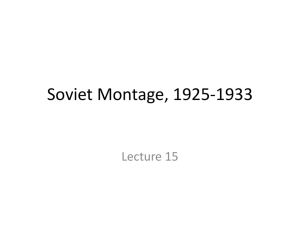


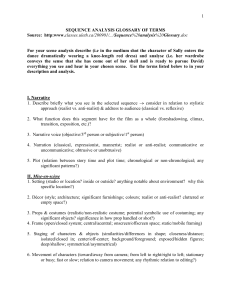
![Beyond the shot [the cinematographic principle & the ideogram]](http://s2.studylib.net/store/data/005478862_1-b57d7625e5fa0aeba060869b1aae8735-300x300.png)

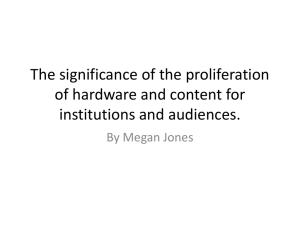

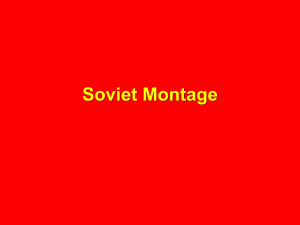
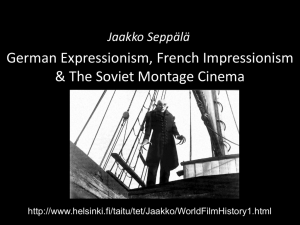

![[Lecture 17] soviet montage 3 for wiki](http://s2.studylib.net/store/data/005394749_1-74b063163f399dbb4123cebb7c05cab3-300x300.png)